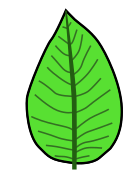Stamp: American-British-Soviet Occ. (Trizone) Mi:959a - overprinted (Germany, Soviet Occupation (General Issues) 1948)
American-British-Soviet Occ. (Trizone) Mi:959a - overprinted (Germany, Soviet Occupation (General Issues) 1948)
24 June (Germany, Soviet Occupation (General Issues) ) within release II. District DRESDEN control number 14&1 goes into circulation Stamp American-British-Soviet Occ. (Trizone) Mi:959a - overprinted face value 1 East German mark
| Stamp American-British-Soviet Occ. (Trizone) Mi:959a - overprinted in catalogues | |
|---|---|
| Michel: | Mi: DD IIaIIa |
Stamp is vertical format.
Overprint: 14 and city/town/village names of that districtAlso in the issue II. District DRESDEN control number 14&1:
- Stamp - American-British-Soviet Occ. (Trizone) Mi: 912 - overprinted face value 2;
- Stamp - American-British-Soviet Occ. (Trizone) Mi: 915 - overprinted face value 5;
- Stamp - American-British-Soviet Occ. (Trizone) Mi: 916 - overprinted face value 6;
- Stamp - American-British-Soviet Occ. (Trizone) Mi: 917 - overprinted face value 8;
- Stamp - American-British-Soviet Occ. (Trizone) Mi: 918 - overprinted face value 10;
- Stamp - American-British-Soviet Occ. (Trizone) Mi: 920 - overprinted face value 12;
- Stamp - American-British-Soviet Occ. (Trizone) Mi: 921 - overprinted face value 15;
- Stamp - American-British-Soviet Occ. (Trizone) Mi: 922 - overprinted face value 15;
- Stamp - American-British-Soviet Occ. (Trizone) Mi: 923 - overprinted face value 16;
- Stamp - American-British-Soviet Occ. (Trizone) Mi: 924 - overprinted face value 20;
- Stamp - American-British-Soviet Occ. (Trizone) Mi: 925 - overprinted face value 24;
- Stamp - American-British-Soviet Occ. (Trizone) Mi: 926 - overprinted face value 25;
- Stamp - American-British-Soviet Occ. (Trizone) Mi: 927 - overprinted face value 25;
- Stamp - American-British-Soviet Occ. (Trizone) Mi: 928 - overprinted face value 30;
- Stamp - American-British-Soviet Occ. (Trizone) Mi: 929 - overprinted face value 40;
- Stamp - American-British-Soviet Occ. (Trizone) Mi: 931 - overprinted face value 45;
- Stamp - American-British-Soviet Occ. (Trizone) Mi: 932 - overprinted face value 50;
- Stamp - American-British-Soviet Occ. (Trizone) Mi: 933 - overprinted face value 60;
- Stamp - American-British-Soviet Occ. (Trizone) Mi: 934 - overprinted face value 75;
- Stamp - American-British-Soviet Occ. (Trizone) Mi: 936 - overprinted face value 84;
- Stamp - American-British-Soviet Occ. (Trizone) Mi: 943 - overprinted face value 2;
- Stamp - American-British-Soviet Occ. (Trizone) Mi: 947 - overprinted face value 12;
- Stamp - American-British-Soviet Occ. (Trizone) Mi: 948 - overprinted face value 15;
- Stamp - American-British-Soviet Occ. (Trizone) Mi: 950 - overprinted face value 20;
- Stamp - American-British-Soviet Occ. (Trizone) Mi: 951 - overprinted face value 24;
- Stamp - American-British-Soviet Occ. (Trizone) Mi: 953 - overprinted face value 30;
- Stamp - American-British-Soviet Occ. (Trizone) Mi: 954 - overprinted face value 40;
- Stamp - American-British-Soviet Occ. (Trizone) Mi: 957 - overprinted face value 80;
- Stamp - American-British-Soviet Occ. (Trizone) Mi: 958 - overprinted face value 84;
- Stamp - American-British-Soviet Occ. (Trizone) Mi: 960 - overprinted face value 2;
- Stamp - American-British-Soviet Occ. (Trizone) Mi: 961 - overprinted face value 3;
- Stamp - American-British-Soviet Occ. (Trizone) Mi: 963 - overprinted face value 24;
- Stamp - American-British-Soviet Occ. (Trizone) Mi: 964 - overprinted face value 75;
- Stamp - American-British-Soviet Occ. (Trizone) Mi:956a - overprinted face value 60;
- Stamp - American-British-Soviet Occ. (Trizone) Mi:956b - overprinted face value 60;
- Stamp - American-British-Soviet Occ. (Trizone) Mi:959a - overprinted face value 1;
- Stamp - American-British-Soviet Occ. (Trizone) Mi:959b - overprint face value 1;
- Stamp - American-British-Soviet Occ. (Trizone) Mi:962a - overprinted face value 5;
- Stamp - American-British-Soviet Occ. (Trizone) Mi:A956 - overprinted face value 60;
Stamp American-British-Soviet Occ. (Trizone) Mi:959a - overprinted it reflects the thematic directions:
Birds (Aves), a subgroup of Reptiles, are the last living examples of Dinosaurs. They are a group of endothermic vertebrates, characterised by feathers, toothless beaked jaws, the laying of hard-shelled eggs, a high metabolic rate, a four-chambered heart, and a strong yet lightweight skeleton. Birds live worldwide and range in size from the 5 cm (2 in) bee hummingbird to the 2.75 m (9 ft) ostrich. They rank as the class of tetrapods with the most living species, at approximately ten thousand, with more than half of these being passerines, sometimes known as perching birds. Birds are the closest living relatives of crocodilians.
A hand is a prehensile, multi-fingered organ located at the end of the forearm or forelimb of primates such as humans, chimpanzees, monkeys, and lemurs. A few other vertebrates such as the koala (which has two opposable thumbs on each "hand" and fingerprints remarkably similar to human fingerprints) are often described as having "hands" instead of paws on their front limbs. The raccoon is usually described as having "hands" though opposable thumbs are lacking.
A leaf (pl.: leaves) is a principal appendage of the stem of a vascular plant usually borne laterally aboveground and specialized for photosynthesis. Leaves are collectively called foliage, as in "autumn foliage", while the leaves, stem, flower, and fruit collectively form the shoot system. In most leaves, the primary photosynthetic tissue is the palisade mesophyll and is located on the upper side of the blade or lamina of the leaf but in some species, including the mature foliage of Eucalyptus,palisade mesophyll is present on both sides and the leaves are said to be isobilateral. Most leaves are flattened and have distinct upper (adaxial) and lower (abaxial) surfaces that differ in color, hairiness, the number of stomata (pores that intake and output gases), the amount and structure of epicuticular wax and other features. Leaves are mostly green in color due to the presence of a compound called chlorophyll which is essential for photosynthesis as it absorbs light energy from the sun. A leaf with lighter-colored or white patches or edges is called a variegated leaf.



